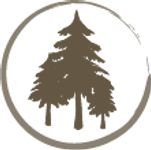August is Tree Check Month!
Please check your trees!
August is the height of summer, and it is also the best time to spot the Asian longhorned beetle (ALB) as it starts to emerge from trees. We are hoping that the citizens and visitors of Maine will take five minutes to step outside and check their trees for any signs of this invasive pest. Checking trees for the beetle will help residents protect their own trees and better direct the USDA’s efforts to eradicate this beetle from the United States.
If you see any of these signs, go to www.maine.gov/alb to learn how to report.
The Beetle
The Asian longhorned beetle (and it's Anoplophora cousins):
- is over 1" long - has very long antennae, banded black and white - is glossy black with distinct white spots - attacks maple trees and other hardwood trees - would emerge from trees late July - October - has native lookalikes, e.g. the whitespotted sawyer (not harmful)

Egg-laying Sites
ALB females start to lay eggs in August. They use their mandibles to create a depression in the bark. Any tree suspected to have Asian longhorned beetle will have these marks.
Exit Holes
When Asian longhorned beetles emerge from the trees, they make perfectly round holes. If you can fit a pencil into the hole about 2 inches deep, it may be an ALB exit hole. Look for egg-laying sites if that's the case.
Frass
Frass is the sawdust-like material that the larval stage of the beetle makes as it tunnels through the tree. Frass can be seen coming out of egg-laying sites and in piles on branches and the ground.
Questions/Comments? Contact us!
Email: bugwatchME.agr@maine.gov
Emerald Ash borer
EAB was first found in Aroostook County. (Madawaska, Frenchville, and Grand Isle), and York County (Acton, Berwick, and Lebanon), ME in 2018.


Origin: Asia
Many new infestations center around campgrounds, implicating camp firewood in this insect’s spread.
Hosts: Ash
Nearest Known Occurrences: To the north, this insect was recently discovered in Edmonston, N. B and Aroostook county. To the south, Emerald ash borer is now known to be within a half of a day's drive of Maine's border. It has been most recently found in Dalton, Berkshire Co., Massachusetts and around Prospect and Naugatuck in New Haven Co. Connecticut; Toronto, ON Canada; Montreal Area (Montérégie Region), QC, Canada.
Quarantine Area: The quarantine area includes all of York County and the northeastern corner of Aroostook County. The quarantine boundaries were drawn to include a buffer on those towns where EAB had been detected. EAB was found in northern Aroostook County in May 2018 and in western York County in September 2018. An emergency order has been in place to limit movement of infested ash from areas where the pest has been found since those discoveries.
Description: Metallic green beetle with wings and body tapered towards the rear.
Signs and Symptoms: Symptoms and signs include D-shaped adult exit holes, bark splitting, serpentine frass-filled (sawdust-like waste) feeding galleries, wood pecker feeding, crown dieback, and epicormic shoots (whips growing off the trunk and branches). Many of these symptoms and signs are similar to other insects and diseases of ash.
Damage: Larval feeding under the bark girdles and kills ash trees. Since its discovery in the United States in 2002 emerald ash borer has killed millions of ash trees.
Biosurveillance: Biosurveillance uses one living organism to monitor for another. A native non-stinging wasp, Cerceris fumipennis, is a efficient survey tool for detecting emerald ash borer. Purple Traps: Large, purple, sticky traps are hung in ash trees to help look for the emerald ash borer.
Please join them in helping to protect Maine’s forest health:
· Be aware of the signs and symptoms of invasive forest pests,
· Ask questions when you see an unfamiliar damage in your forests and neighborhood trees,
· Don’t move firewood long distances—you may move hidden invasive pests within and on that wood.
DEPARTMENT OF CONSERVATION Maine Forest Service Forest Health and Monitoring
168 State House Station – 50 Hospital Street – Augusta, ME 04333-0168
(207) 287-2431
There are other insects that you should monitor for. Gypsy moth is pest that affects southern Maine more than northern Maine. The spruce budworm may be making a comeback. If you notice anything unusual in the forest or around your home, please report this information to the Maine Forest Service.
This information was taken from the Maine Forest Service information sheets.













